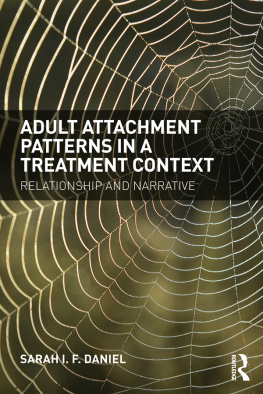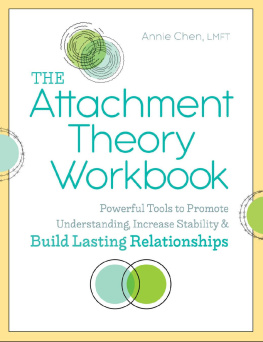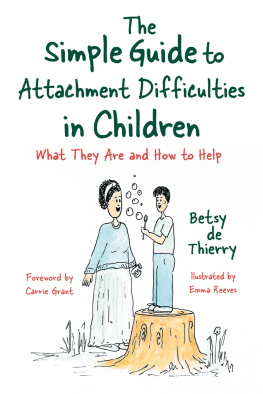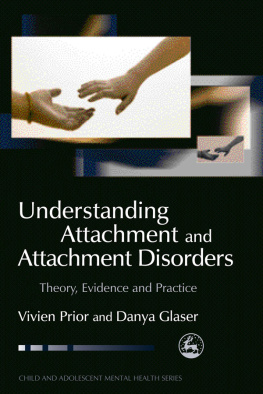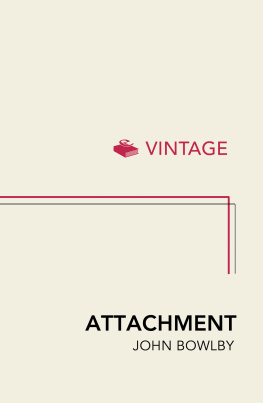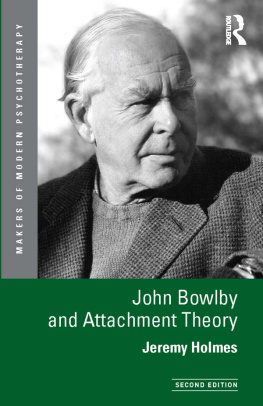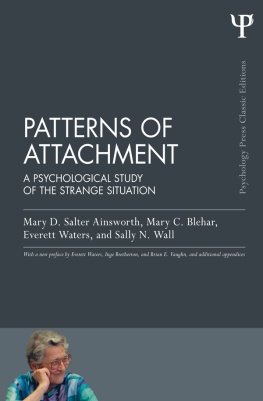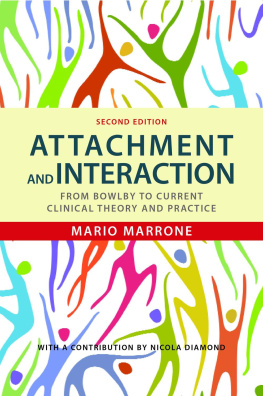Adult Attachment Patterns in a Treatment Context
Attachment theory posits that the need for attachment is a life-long phenomenon that becomes especially relevant in times of crisis or trauma. When adults experience illness, accidents, assaults, psychological difficulties, or losses, their attachment-behavioural systems are activated, motivating them to seek help and support from family and friends and/or from helping professionals. However, the resulting request for help is affected and shaped by earlier experiences regarding the support and trustworthiness of attachment figures. Can others be trusted? Is it safe to show vulnerability? How should one behave to increase the likelihood of receiving the help needed?
Adult Attachment Patterns in a Treatment Context provides an integrated introduction to the subject of adult attachment. Research into adult attachment patterns offers professional helpers a theoretically sound insight into the dynamics underlying a range of client behaviours, including some of the more puzzling and frustrating behaviours such as denying obvious pain or continually pushing the professional for more personal involvement. Sarah Daniel shows how applying knowledge of attachment patterns to treatment settings will improve the way in which professionals engage with clients and the organization of treatments. This book will be relevant to a range of helping professionals such as psychotherapists, psychologists and social workers, both in practice and in training.
Sarah I. F. Daniel is a clinical psychologist and she is currently employed as an associate professor in the Department of Psychology, University of Copenhagen.
Adult Attachment Patterns in a Treatment Context
Relationship and narrative
Sarah I. F. Daniel

First published 2015
by Routledge
27 Church Road, Hove, East Sussex BN3 2FA
and by Routledge
711 Third Avenue, New York, NY 10017
Routledge is an imprint of the Taylor & Francis Group, an informa business
2015 Sarah I. F. Daniel
The right of Sarah I. F. Daniel to be identified as author of this work has been asserted by her in accordance with sections 77 and 78 of the Copyright, Designs and Patents Act 1988.
All rights reserved. No part of this book may be reprinted or reproduced or utilized in any form or by any electronic, mechanical, or other means, now known or hereafter invented, including photocopying and recording, or in any information storage or retrieval system, without permission in writing from the publishers.
Trademark notice: Product or corporate names may be trademarks or registered trademarks, and are used only for identification and explanation without intent to infringe.
British Library Cataloguing-in-Publication Data
A catalogue record for this book is available from the British Library
Library of Congress Cataloging-in-Publication Data
A catalog record for this title has been requested
ISBN: 978-0-415-71873-8 (hbk)
ISBN: 978-0-415-71874-5 (pbk)
ISBN: 978-1-315-75393-5 (ebk)
Typeset in Times
by Cenveo Publisher Services
Contents
PART I
Adult attachment patterns and treatment relationships
PART II
Relational and narrative characteristics of attachment patterns
PART II
Attachment patterns and treatment practice
Figures
Tables
This book was translated from the Danish version Relation og fortlling. Tilknytningsmnstre i en behandlingskontekst (2012, Copenhagen: Samfundslitteratur) by Elizabeth Xiao-an Li and further edited and adapted by Sarah I. F. Daniel.
is based on Bartholomew, K. (1990). Avoidance of intimacy: An attachment perspective. Journal of Social and Personal Relationships, 7(2), 147178, and reprinted with permission from Sage Publications Ltd.
is based on Mikulincer, M. & Shaver, P. R. (2007). Attachment in adulthood: Structure, dynamics, and change, New York: Guilford Publications, and reprinted with permission from Guilford Publications.
A detailed overview of the Patient Attachment Coding System is included in with permission from Alessandro Talia and Madeleine Miller-Bottome.
When working as a psychologist, doctor, social worker, nurse, or in other professional caregiving roles, one meets people who, to different extents, feel weak, vulnerable, or in a crisis, and who are in need of support and care. Most people in caregiving and treatment professions choose this field of work because of a sincere desire to help others. Because of this desire to help, treatment providers may find it hard to understand or accept when clients are unwilling to receive help or to cooperate in the way proposed. However, professional caregivers commonly come across clients who are sceptical and wary, clients who are unable to express their problems, clients where cooperation proves difficult, and clients who demand more than the caregiver can offer.
Treatment providers share the challenge of avoiding frustration and finding a way to help clients who, for some reason or other, appear difficult to work with. In these cases, understanding the underlying causes of a clients behaviour in treatment can prove crucial, for example, understanding the cause of the clients scepticism or understanding why some clients struggle to express and describe their problems. This book shows how current research in attachment theory can give insight into the background of the relational challenges encountered with some clients, and how treatment providers can manage these challenges in their work with adult clients.
The book is primarily aimed at treatment providers and counsellors in the social and health sectors, as well as students working towards a career in these professions. The book especially focuses on the treatment of individual adult clients. Although it may prove of interest to people working with couples and families, the book contains only limited discussion of the particular challenges of couples and family therapy. The aim of the book is to provide a broad introduction to the theory of and research into adult attachment patterns, and to show attachment patterns relevance to different treatment forms and settings. This book therefore does not serve as an exhaustive manual or instruction for psychotherapy, milieu therapy, or other treatment forms, but rather provides a theoretical perspective that can inform and be integrated into a wide range of treatment practices.
Attachment theory is relevant to the understanding of helping relationships, as it is fundamentally about relationships where one party seeks support and help from another party who, in the specific context, is stronger and/or more knowledgeable. Since the British psychiatrist John Bowlby established attachment theory in the mid-twentieth century, the majority of the published literature has been about the relationship between children and parents. It is now commonly known that childrens psychological development depends on their opportunity to form attachments to one or more stable caregivers. Attachment varies in quality from secure attachment to different forms of insecure attachment depending on the caregivers sensitivity and behaviour. Detailed knowledge exists of the correlation between the individual attachment patterns children form in relation to their central caregivers and the childrens future well-being and social competences (Thompson, 2008).

